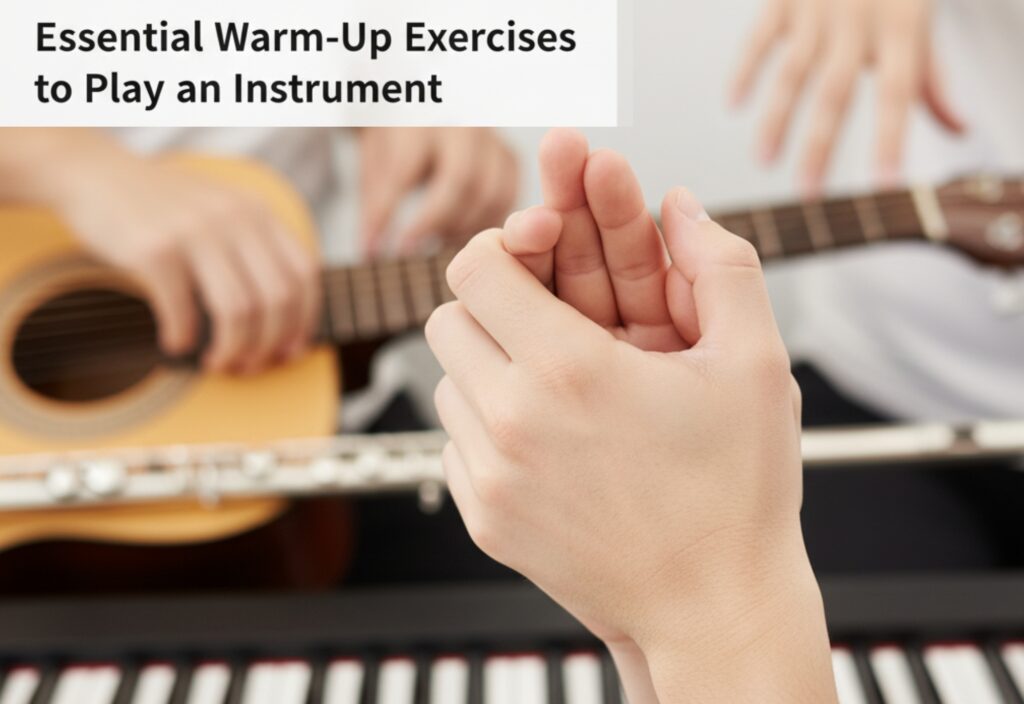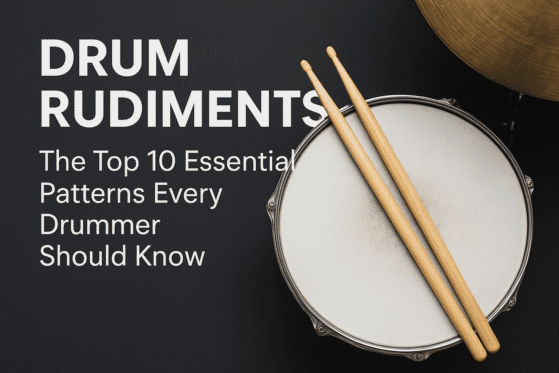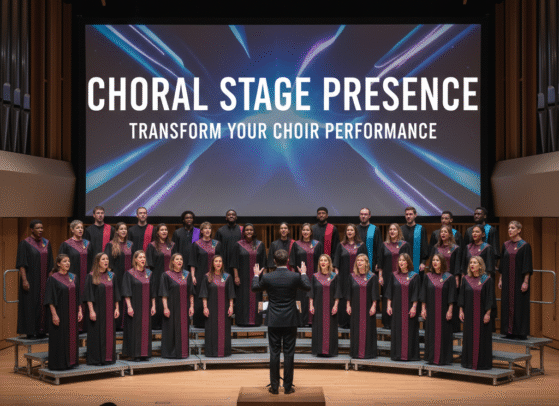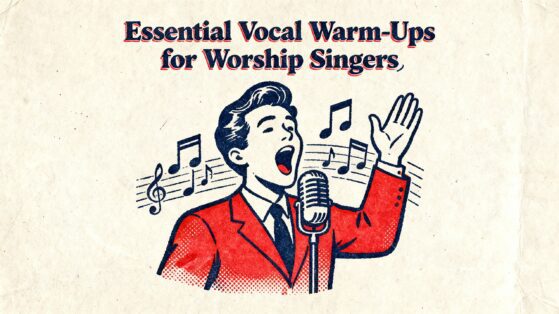Essential Warm-Up Exercises | 5 Steps to Play an Instrument
Every artist knows that playing an instrument isn’t only about skill — it’s about connection. Before a single note is played, a musician’s hands, mind, and body must align. Just as athletes stretch before a race, musicians too must engage in essential warm-up exercises before immersing themselves in sound. The purpose is not merely to loosen muscles but to awaken sensitivity, focus, and control.
Warm-up exercises are often underestimated. Many skip them in eagerness to play, only to face stiffness, uneven tone, or even fatigue later. Yet, the few minutes spent in mindful preparation through these essential warm-up exercises can transform the quality of your practice or performance. They bring rhythm to your breathing, balance to your posture, and responsiveness to your fingers — ensuring that both technique and expression emerge with clarity.
Let’s explore five essential warm-up exercises that prepare your entire system — physical and mental — for a fulfilling musical experience.

Hand and Finger Stretches | An Essential Warm-Up Exercise for Flexibility
Your hands are at the heart of your musical expression. Whether pressing piano keys, plucking guitar strings, or bowing a violin, the muscles, tendons, and joints in your fingers are constantly engaged. They deserve care before they are put to work.
Start by gently opening your hands wide, extending your fingers as far apart as they can go, then relaxing them back into a soft curve. Hold each stretch for about five seconds, feeling the tension release. Next, interlock your fingers and rotate your wrists slowly in both directions. This loosens the small ligaments that often tighten from repeated motion.
For instrumentalists who play string or keyboard instruments, finger stretching is not just about preventing stiffness — it enhances reach and dexterity. It helps avoid strain during fast passages or extended chords. Wind players and percussionists also benefit, as relaxed hands enable smoother articulation and lighter touch.
As you complete this first warm-up, notice how your fingers begin to feel lighter. Each joint becomes more responsive, and your hands feel more like an extension of your musical intention.

Finger Independence Drills | An Essential Warm-Up Exercise for Control
Once the hands are awake, it’s time to train precision. Finger independence is the foundation of control. Many beginners rely unconsciously on their stronger fingers, which limits agility. Independence drills teach each finger to move freely, without depending on its neighbors.
For keyboard players, one simple exercise is to place all five fingers on consecutive keys, pressing one key at a time while keeping the others relaxed on the surface. This might sound easy, but it reveals which fingers tend to tense up. For guitarists, practice ascending and descending chromatic patterns — for instance, placing one finger per fret across four strings. Violinists can practice silent fingering on each string without using the bow, paying attention to even finger pressure.
The beauty of these drills lies in their subtlety. They don’t just strengthen your fingers — they build awareness. Over time, every note you play becomes cleaner, faster, and more deliberate. When your fingers move independently, your phrases flow naturally, and technical barriers begin to disappear.

Breathing and Posture Alignment
Music doesn’t live only in the hands — it lives in the body. Breath and posture are the unseen foundations that shape tone, rhythm, and expression. A tense body limits the quality of your sound, no matter how skilled your fingers are.
Begin by taking a deep, unforced breath through your nose, allowing your abdomen to expand. Hold it gently for a moment, then exhale through your mouth. Repeat this a few times, letting your breathing settle into a calm rhythm. This process relaxes the nervous system and prepares your mind for focused practice.
As you breathe, pay attention to posture. Sit or stand tall with your back straight and shoulders relaxed. The head should feel balanced, not leaning forward or backward. For wind players and singers, posture directly affects airflow and tone control. For instrumentalists like pianists, drummers, and guitarists, it ensures endurance and prevents back or shoulder strain during long sessions.
Balanced posture allows your energy to move freely. You begin to feel grounded yet light, ready to channel music without physical resistance.

Slow Scales and Arpeggios
After stretching and aligning your body, the next step is to awaken your musical touch. Scales and arpeggios might seem repetitive, but they are the most powerful warm-up tools available to any musician. They engage coordination, ear training, and tonal awareness all at once.
Start with a simple scale, such as C major, and play it slowly and evenly. Listen carefully to the tone of each note — aim for consistency in volume, articulation, and clarity. Avoid rushing. The purpose is not speed, but control and accuracy.
For pianists, practice both hands separately first, focusing on smooth fingering and evenness, then combine them once the motion feels natural. Guitarists can alternate between picking and legato techniques, emphasizing clean transitions between notes. Violinists should focus on bow pressure and direction while keeping intonation precise. Wind players can combine scale practice with breathing control, ensuring steady air support.
Follow your scales with arpeggios — broken chords that move across a wider range. They improve finger spacing, stretch flexibility, and train your hands to respond effortlessly to harmonic changes. Over time, scales and arpeggios become more than exercises; they become moments of connection between sound, muscle, and awareness.
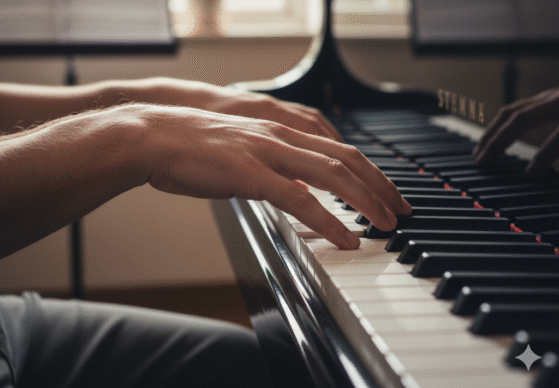
Rhythmic Clapping or Tapping | An Essential Warm-Up Exercise for Timing
Before launching into a full performance, it’s important to wake up your internal sense of timing. Rhythm is the invisible thread that holds music together. Even the most expressive melody loses impact if the rhythm wavers.
Clapping or tapping exercises are simple yet incredibly effective. Begin with steady beats — perhaps four counts per measure — and gradually vary the patterns. Try syncopations, triplets, or alternating accents. You can do this using a metronome or even by tapping along to a backing rhythm.
For drummers, this is an essential warm-up before touching the sticks. For other instrumentalists, it helps to internalize tempo and strengthen coordination between mind and body. The rhythm becomes part of you, not something you merely follow.
As your hands and feet synchronize with the beat, you’ll notice your confidence growing. When you finally begin playing your instrument, your rhythm will feel natural and intuitive — no matter how complex the piece may be.
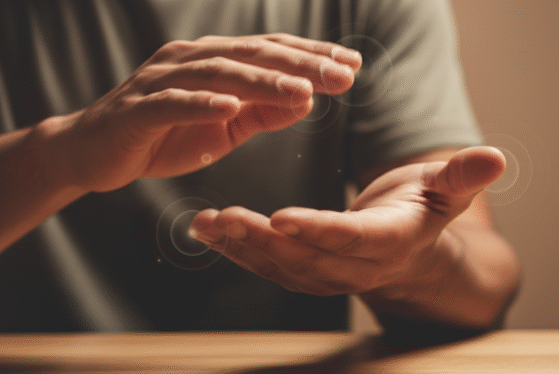
Building a Complete Warm-Up Routine
Each of these exercises plays a unique role, but together they create a complete system of readiness. Stretching keeps your body flexible. Finger drills refine coordination. Breathing aligns your energy. Scales build technical command. Rhythm exercises strengthen timing.
When practiced regularly, this routine does more than prepare you physically — it enhances your emotional connection to your instrument. You enter a state of focus where distractions fade, and every note feels intentional. Warm-ups become a ritual — a quiet dialogue between you and your music before the first sound fills the room.
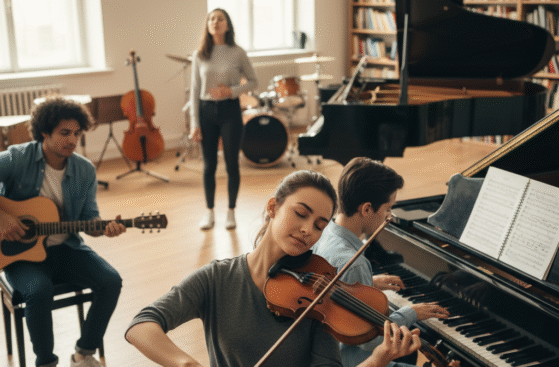
The Hidden Benefits of Warming Up
Essential Warm-Up Exercises also prevent fatigue and long-term strain. They improve your awareness of how your body moves, helping you detect tension before it becomes injury. Over time, this awareness contributes to longevity in playing and better performance consistency.
Beyond physical benefits, these exercises have a mental impact too. They signal your mind that it’s time to shift from the external world to the inner space of music. A few mindful minutes can elevate your practice from mechanical repetition to expressive artistry.
Whether you’re preparing for a short practice or a stage performance, treat these moments of preparation with respect. They are where true musicianship begins.
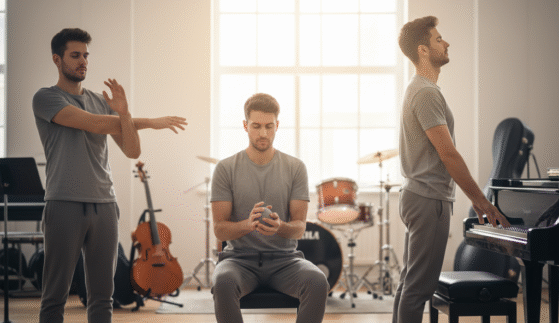
Final Thoughts
Music thrives when both the body and the mind are in harmony. A disciplined warm-up routine sets the stage for that unity. It turns uncertainty into control, stiffness into flow, and effort into ease.
Before your next session, give yourself this time — to breathe, stretch, focus, and feel. The reward will be clear in the way your fingers move, your tone resonates, and your music speaks.
At The Mystic Keys, we encourage every student to embrace the power of preparation. Our instrumental courses integrate these warm-up principles into daily practice, helping students build a solid foundation for expressive, confident playing.
Start your journey with us today — and experience how mindful preparation transforms not just your music, but your connection to it.
Intersted in learning music with us? Register now
For more information and exciting resources about learning music, visit our website at The Mystic Keys. For more music content and exciting offers follow us on
Facebook, Instagram, YouTube, LinkedIn, Twitter, Pinterest, and Threads.


